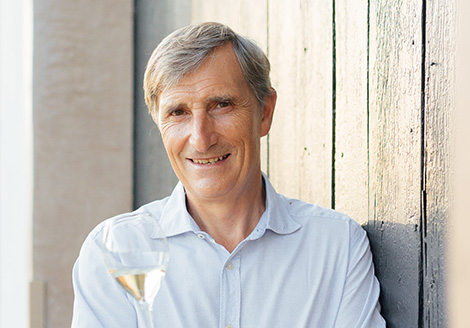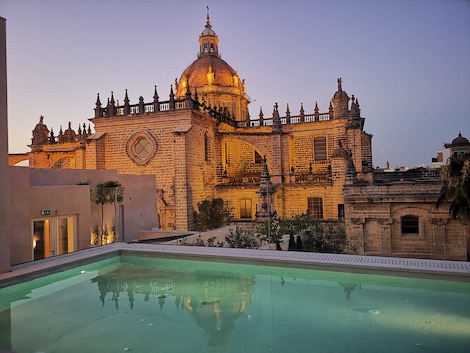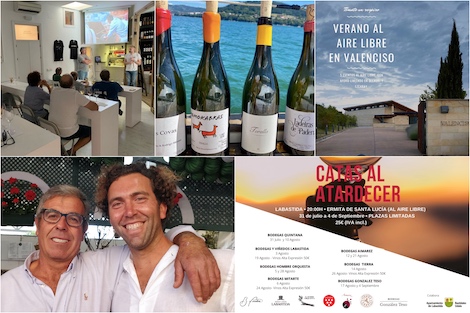“As long as there is a surplus of grapes, it will be difficult to lift the image of Cava”

In just two years, Javier Pagés, 62, president of DO Cava and CEO of Codorníu between 2005 and 2018, has managed to find consensus to tackle one of Cava’s most pressing pending issues: how to classify a vast, sparse territory. As well as Catalonia, producing over 90% of the total Cava output, the appellation includes various areas in the provinces of Valencia, Zaragoza (Aragón), Navarra, La Rioja, Álava and Badajoz in the south west.
The changes mean that new names will have to be learnt -existing wine designations cannot be replicated. Four vast areas have been established: Comtats de Barcelona which covers Catalonia, Viñedos de Almendralejo (Extremadura), Altos de Levante (Valencia) and Valle de Ebro for cava wines produced from Aragón to the Basque Country.
Additionally, two of them have been split in subareas. Comtats de Barcelona includes Valls d’Anoia-Foix (this is more or less present day Penedès), Serra de Mar (Alella), Conca del Gaia (Tarragona), Serra de Prades (Conca de Barberà) and Pla de Ponent (Costers del Segre). Valle del Ebro covers Valle del Cierzo (Aragón) and Alto Ebro (Navarra, La Rioja and Basque Country). The single-vineyard category Cava de Paraje Calificado (CPC) continues to be Cava’s smallest geographical unit.
There is also a new quality classification. Cava wines labelled as Reserva, Gran Reserva and Cava de Paraje Calificado (all three represent 12% of the 250m bottles sold in 2019), are part of the new category called Cava de Guarda Superior. Meanwhile for a cava to be labelled as Reserva it needs to be aged for 18 months, against the previous 15 months. Furthermore, wines in this category must be organically certified after a five-year transition period starting in 2020. This brings high-quality Cava closer to producers who left the appellation and grouped under Clàssic Penedès or Corpinnat. The rest of Cava wines will be renamed Cava de Guarda to draw attention to its ageing -at least nine months.
In this interview, Javier Pagès unveils further details about the new regulation, the discussions that concluded in the final agreement, the coexistence with Corpinnat and Clàssic Penedès, the uncertainty brought by Covid-19 and the next steps in the DO. At his age, he is happy to have lent a hand to improve Cava.
Land classification is a long-awaited, historic step for Cava. Why did it happen now and why has it been relatively quick?
Firstly, consumers are increasingly interested in the origin of wine. Being such a vast DO, producers were unable to explain the origin and consumers had no means to learn about it. This was a widespread feeling when I became president two years ago; there was no need to bring it up. I am proud that both producers and growers backed this decision unanimously. This is about building; we are not destroying anything. Anyone who doesn’t share this idea or vision or who targets consumers who are not interested in the origin can continue as they had been doing previously.
What issues were most disputed or difficult to approve?
Change always generates anxiety because it brings opportunities but also risks. The most controversial point was probably the requirement to be organically certified in the Cava de Guarda Superior category. Some producers did not want it to be mandatory but it prevailed in the end. This way, we send a stronger message: a commitment to sustainability across the entire category. It has been difficult because it implies taking risks in the vineyard such as this year, which is very challenging given all the problems we are having with downy mildew.
Does this come a bit late considering the severe fragmentation amongst sparkling producers in Catalonia?
Cava is a major appellation and a key player in international markets, but it also faces many challenges, both old and new; competition is always difficult. It is never too late to take steps to strengthen Cava and to bring differentiation in the category. It may seem confusing or incongruous to have producers making traditional method sparkling wines under different names but now we have the tools to bridge the gap. In my opinion, if we want to go far, we must go together.
Do you think that the new quality standards for premium Cava such as limiting yields to 10,000 kg/ha and organic certification will bring back producers who are now members of Corpinnat and Clàssic Penedès?
To tell you the truth, our main concern was to provide Cava with the right tools to compete in different markets. In this process we have looked both inside and outside and we have adopted all the elements that could enhance quality. Since we were working on delimiting the territory, it made sense to build a high-quality category that placed Cava among the most demanding regulations for sparkling wines made using the traditional method. This obviously brings us closer to Corpinnat and Clàssic Penedès because both share many of these regulations. Producers can of course add their own requirements and decide for instance that their Reserva reaches its peak after 22 months or they may choose to increase ageing times to 60 months.
Bringing the Corpinnat producers back to Cava -is it one of your goals during your tenure?
I’ve always wanted to have them with us. They are all fantastic producers who have followed their path, but after the consensus achieved in DO Cava, I can only hold out my hand; this is my dream.
Have you been in touch with them after the new regulations were announced?
We know each other and live in the same territory. Our door is wide open. Corpinnat members were making Cava barely two years ago. They are outstanding producers and conversations always take place. Hopefully they will discuss this matter among themselves. We are looking forward to welcoming them back. It would be positive for the industry and for all of us; we would be able to be more competitive.
What are the next steps?
The official procedure involves the Ministry of Agriculture, which has to give the final approval and, if it were the case, also the EU but the nature of the amendments makes this unnecessary. We expect to have the green light in October. The Ministry is informed of the new specifications and has been involved in the process. We have worked closely.
When will we be able to see the new areas and categories on the labels?
We are drafting the regulations right now. Procedure timings and Covid-19 will prevent us from certifying specific origins in this vintage, but the new categories will be ready for the 2021 vintage and the first Cavas with the new designations will be released in 2022.
Will Cava de Guarda and Cava de Guarda Superior wines be able to show the areas and subareas on their labels?
It will be possible in the case of the areas, but subareas will be restricted to Cava de Guarda Superior.
Are blends of different areas allowed in the production of Cava Reserva and Gran Reserva?
Yes, because the DO allows a producer based in Catalonia to buy wine in Extremadura or in the Ebro valley, but I would say that the mood nowadays is to restrict premium categories to specific areas and subareas in order to focus on the most distinctive features. This of course doesn’t prevent any winemaker from choosing freely within the whole DO.
Did it take a great deal of effort to agree on the names of the areas and subareas?
Names always generate discussions because it's an emotional issue. We have tried to lead the process by listening, talking to the producers, working with creatives and trying to choose words that echo each area. Many would have liked Penedès to be Penedès, but that is not possible. It is unlikely that the chosen names will please everyone or that they find them satisfactory, but they will eventually be accepted. Rioja refers to the river Oja, but today nobody thinks that the region should had been named after the river Ebro. Over time, the original meaning vanishes.
Producers in Requena now say that they will work on an alternative name to Altos de Levante, one that represents the area better. Was it not agreed with them?
Indeed, it was. In fact, Altos de Levante was originally proposed by producers in Requena. The Regulatory Board simply took up the proposal. They now believe that they can find a name that will describe their territory better. Since the name is important and we have time to change it without interfering the project, either in terms of content or timing, the Consejo is giving them its full support. Our will has always been to bring unity to Cava and to strengthen it. It is our desire to preserve the unity and the consensus that has presided over the entire project.
The press release issued by the DO states that "wineries that press and ferment 100% of the grapes at the property will be identified". Will producers be able to show only this differentiation, or will there be different types of producers in a similar way to Champagne depending on whether they work with their own grapes, buy grapes or must, act as négociants...?
This issue also created heated discussions. In the end, we agreed that there had to be some kind of recognition for those who do not buy wine and press all their grapes. There was also some debate about whether the grapes should be owned or not, but we decided not to be too restrictive so that producers have the freedom to buy grapes from particular growers. The most important thing is that every single litre of wine must be pressed in the winery. Champagne is very diverse; we have decided to start this way and see what happens in the future. As we already have traceability, the seal "Elaborador integral" will appear soon on the labels.
Isn’t this a missed opportunity to create a similar figure to Champagne’s small growers taking into account the relevance they have acquired?
In our case, "elaboradores integrales" cannot be big producers because it is very difficult for them not to buy a single litre of wine at some point. Then there are further requirements, like the fact that they must have their own brands and that they cannot produce for third parties. And if a producer wants to highlight a special vineyard, they have the Cava de Paraje Calificado category.
In 2019, the equivalent of Cava de Guarda Superior accounted for 12% of all sales. Could the more demanding requirements for Reservas (18 months as opposed to 15 in the past) and the mandatory organic certification reduce this figure?
No, because there is an ongoing demand for these Cavas which I hope will remain in the future, although we are not facing the best economic conditions. We still do not know the effects of Covid-19. The aim is to boost the category and build up its prestige.
Quality producers have traditionally complained about the difficulties of selling their wines abroad given Cava’s cheap average price. Are you going to work specifically on improving these figures?
We have a big challenge ahead. We are positive that Cava provides much higher quality than what markets perceive. Buyers associate price with quality, so low prices meant quality products have been underestimated as well as the value they deliver. These steps will help but in the current circumstances I don’t expect to see quick progress. We will need to be patient and work hard to achieve steady growth.
This week, the online store of a discount chain in Spain was selling 18 brands of 75cl. Cava bottles under €4, the cheapest one at €1.95. Thirteen other brands retailed under €5. With all of them labelled soon as Cava de Guarda, to what extent will they damage the image of Cava as a whole?
While there might be less thoughtful winemakers, the average level of cava and the traditional method is good. Low prices are a reflection of grape prices and this is one of the big issues to be addressed. A good DO encourages grape prices to rise, so that producers cannot afford to sell their wines at low prices because they would otherwise lose money. As long as there is an oversupply of Cava grapes, it will be difficult to upgrade the category. This does not mean that grapes are not good, but that we are in a buyer's market due to the excess of land under vine, something that in the medium and long term can only bring disadvantages.
These low-priced Cavas exist and will benefit from a word, Guarda, which seeks to add value to a demanding method that establishes a minimum of nine months of ageing, in contrast with other sparkling wines that are bottled earlier, do not require space for ageing or do not undergo disgorgement. Ageing adds complexity and distinctive qualities to the wine. That is why we have decided to use the word Guarda together with the nine months mention. It provides added value and we are trying to increase the value of all types of Cava.
But this doesn't solve the basic problem that the same name is being used for products with very different prices and qualities.
It is unavoidable. It also happens in Champagne, which is the best business in the world of wine and an appellation that has managed to make the most of its wines. Disparities will always exist. But if we manage to adjust the vineyards to market demand (four years without regulation have resulted in 5,000 redundant hectares), things will improve. Good and not so good products will continue to coexist.
The press release doesn't mention disgorging dates of top Cavas. Was this point ever raised?
It was discussed but not approved because of the complexity it entails for both the producers and the Regulatory Board. However, all tirage for Cava de Guarda Superior will need to be done from 1 January onwards following the harvest. The fact that disgorgement dates are not required does not prevent a producer from stating it.
Can you define future guidelines bearing in mind the uncertainty brought on by Covid-19?
We have accomplished one of the main priorities of our strategic plan. Now we have to put it into practice and carry it through. This mostly involves communicating it and ensuring that the information reaches consumers. They must know that Cava has traceability and that all procedures are carried out correctly. In this period of major changes and dynamism, we are looking for all possible communication resources to convey a message that should not be merely educational. For many wine lovers, the way a wine is made is central to their purchasing decisions, but there is another type of consumer to whom we want to show that Cava is not just a social or celebratory wine, but also a food-friendly one. One of our core communication strategies involves cava and food.
What are the likely scenarios for this harvest?
We are expecting a very difficult harvest due to the effects of Covid-19 on the economy. In Barcelona and many other areas of Catalonia and Spain, restaurants are not at 100%, tourists are absent, we have once again restricted visitor numbers and we are uncertain whether it will get any worse. The larger the stock, the smaller the need to purchase grapes on the market; and this year there is less cash to spend. There are other challenges that anticipate a hard harvest. In some areas there has been a high incidence of mildew and oidium that will affect yields; and there's the ongoing problem with hail. It's an ongoing race.
Finally, how would you sell a bottle of cava to a consumer on the other side of the world who is completely unaware of what cava is?
I would start by telling them that it is a sparkling wine that can be enjoyed on many occasions and that it has been improving its quality over the years. It comes from a specific area, in the Mediterranean, so it has unique features and a strong personality. At the same time, however, it is made in different areas and by different producers, each with their own individual traits, so it is a wine that they will be able to return to again and again.

Amaya Cervera
A wine journalist with almost 30 years' experience, she is the founder of the award-winning Spanish Wine Lover website. In 2023, she won the National Gastronomy Award for Gastronomic Communication
Wine tastings and events in August 2020
NEWSLETTER
Join our community of Spanish wine lovers






